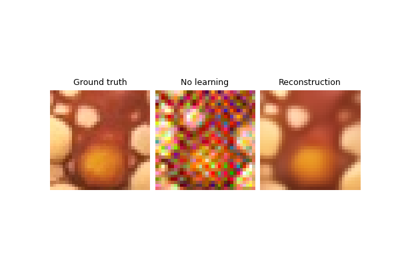GSDRUNet#
- class deepinv.models.GSDRUNet(alpha=1.0, in_channels=3, out_channels=3, nb=2, nc=(64, 128, 256, 512), act_mode='E', pretrained=None, device=torch.device('cpu'))[source]#
Bases:
Gradient Step Denoiser with DRUNet architecture.
Based on the GSPnP method from Hurault et al.[1].
- Parameters:
alpha (float) – Relaxation parameter
in_channels (int) – Number of input channels
out_channels (int) – Number of output channels
nb (int) – Number of blocks in the DRUNet
nc (Sequence[int,int,int,int]) – number of channels per convolutional layer in the DRUNet. The network has a fixed number of 4 scales with
nbblocks per scale (default:[64,128,256,512]).act_mode (str) – activation mode, “R” for ReLU, “L” for LeakyReLU “E” for ELU and “S” for Softplus.
downsample_mode (str) – Downsampling mode, “avgpool” for average pooling, “maxpool” for max pooling, and “strideconv” for convolution with stride 2.
upsample_mode (str) – Upsampling mode, “convtranspose” for convolution transpose, “pixelsuffle” for pixel shuffling, and “upconv” for nearest neighbour upsampling with additional convolution.
download (bool) – use a pretrained network. If
pretrained=None, the weights will be initialized at random using Pytorch’s default initialization. Ifpretrained='download', the weights will be downloaded from an online repository (only available for the default architecture with 3 or 1 input/output channels). Finally,pretrainedcan also be set as a path to the user’s own pretrained weights. See pretrained-weights for more details.device (str) – gpu or cpu.
- References:
Examples using GSDRUNet:#

Regularization by Denoising (RED) for Super-Resolution.

